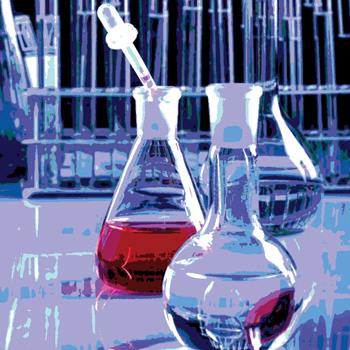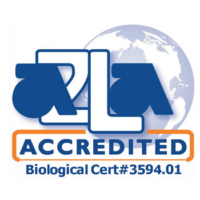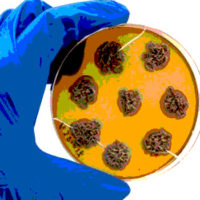Contamination of food products, either accidental or intentional, is a problem across the entire food supply chain, influenced by such factors as economic motivation for adulteration and globalization of the food supply. It is important to realize that quality standards, when followed, provide an essential safety net for such issues facing food manufacturers and processors.
1. How do you differentiate between chemical contamination and adulteration? And what are the implications of this distinction?
Contamination and adulteration both may involve the presence of a substance that is not intended to be in a product. The difference is that contamination is unintentional. It may result from natural causes (e.g., heavy metals of the soil that are taken up by plants) or causes implicit in the process (e.g., pesticide residues). These scenarios are often referred to as technically unavoidable. Contamination can also occur as a consequence of some sort of shortcoming or lapse in quality control. Contamination is, for the most part, predictable (e.g., higher residues of arsenic can be expected in plants grown in soil that is itself high in arsenic; the application of pesticides in general will lead to pesticide residues in plants), and risks from contamination are generally easier to manage or limit because they involve hazards that manufacturers know they need to carefully control. Additional examples are aflatoxins in peanuts or milk, or microbiological contaminants in fresh or canned products.
Adulteration, on the other hand, is generally economically motivated. It often employs the intentional replacement of the expected ingredient, or its dilution, with a less expensive alternative—such as the scrap melamine that was added to milk products and pet food to falsify the levels of protein in these products. Not every case of adulteration will result in serious adverse health effects such as those related to the melamine scandals, which is why we do not hear about this problem as often as it occurs. In most cases, finished product manufacturers and consumers will simply be cheated out of what they have paid a premium for—still unethical, still with some potential negative consequences for the brand image (e.g., consumer detection of taste and/or texture differences), but not necessarily a health risk to the consumer.
However, adulteration always results in the introduction of unknown hazards and hence unknown risks into the production of, and eventually into, the consumer product. No one knows what was added (except for the adulterator), and thus no one can account for risks associated with that substance. The food’s safety, the brand’s image and ultimately the safety of the consumer are at the mercy of the adulterator’s knowledge with regard to the safety of the substitution. (In the melamine milk powder scandal, for instance, had the perpetrators not used scrap melamine with the combined presence of melamine and cyanuric acid, it may not have resulted in tragic health effects—widespread kidney problems and even the deaths—on infants and would have probably gone undetected.) That is the danger adulteration poses—an unknown element is introduced into the food supply chain that may be harmless, but may be devastating, and it often is not reasonable to expect its presence because it is designed to bypass detection by routine testing.
2. How does the industry look for adulterants—in other words, for substances that are never supposed to be used around food or food equipment in the first place?
To test for the unknown, to discover the unexpected, is a real challenge for analysts and risk managers. One of the best approaches to detect the presence of an unknown substance—to get an indication of whether a product might have been adulterated for economic gain—is to verify the identity of an ingredient rather than test for the presence of potential adulterants. In other words, account for what a product is rather than what it isn’t.
Those intent on cheating are working to find ways to deceive routinely applied test methods in order to make money—the potential economic rewards are highly compelling for them. It is technically challenging and economically unfeasible to stay one step ahead, trying to always test for what the next adulterant will be. That potential list is really endless. Once industry catches up, by testing for melamine, for instance, the criminals have likely moved on, knowing manufacturers are looking for that particular adulterant. Moreover, a manufacturer will have to keep adding new tests to detect each individual potential adulterant—costing resources, delays in getting product to market, etc. This is where testing to standards that define the identity, quality and purity of a product—its overall authenticity—can play an important role and add value for all stakeholders in the food supply chain.
3. Are the current food safety systems that are widely employed by industry adequate to address the challenges implicit in economically motivated adulteration?
Industry employs a number of approaches to safeguard the food supply. These include ISO 22000, the Global Food Safety Initiative, the British Retail Consortium and other systems that, when properly implemented, executed and certified, will help a manufacturer deliver safe food to customers. Additionally, many major retailers have other quality and security systems in place. Food manufacturers should and frequently do establish their own relationships and processes with suppliers, which may include visiting and inspecting supplier sites to ensure compatibility with the manufacturer’s food safety system. This process is frequently referred to as vendor qualification. However, all food safety and food quality systems rely on the ability to predict and manage reasonably foreseeable risks and hazards. Prediction is very difficult when you don’t know what your substance is—and in the case of adulteration, only the adulterator has that knowledge.
4. Specifically, how do quality standards such as those set forth in the Food Chemicals Codex help detect—or deter—economically motivated adulteration?
The knowledge of the authenticity—the identity, quality and purity—of all food ingredients used is the most basic element that all food quality and safety systems rest upon. And it is one that is not affirmed as often as it should be. Verifying that incoming ingredients are safe requires, among other aspects, that they are authentic, that is, that the ingredient delivered is actually what it claims to be. These are the starting materials, and if they are adulterated, it is not possible to predict the quality and safety of the final product.
Independently developed quality standards from a third party not only provide a basis for agreements between supplier and manufacturer about the expected quality and purity of an ingredient, but also allow one to test for adherence to these agreed-upon specifications. The Food Chemicals Codex (www.usp.org/fcc/), or FCC, provides such written specifications for identity, quality and purity. However, the FCC goes farther in also providing test methods suitable for the verification of these standards and, in numerous cases, reference materials suitable to verify the correct execution of the test method.
Periodic checks against these standards can help ensure no unknown substance has entered the supply chain. These standards will tell you, for instance, if you have 75 percent of vitamin E or L-alanine, rather than the 98 percent you expected, indicating reason for concern.
5. How does globalization compound the challenges food manufacturers face in ensuring safe food?
The more nodes the supply chain has—as materials are sourced farther and farther away from where the finished products are manufactured—the more opportunity for bad things to happen, plain and simple. Manufacturers may source from suppliers for price considerations, and today’s fierce competition can help create an environment ripe for corner cutting, but certain ingredients (e.g., açaí berries, originating in the tropical forests of Brazil) simply may not be available elsewhere. With added risk comes added responsibility to develop more comprehensive systems that take into account modern realities and threats. As the old adage goes, “Where there is a buyer, there is a seller.” With a food ingredient changing hands many times before it reaches the loading dock of a final food manufacturer, it becomes more challenging to ensure fair ethics and practices from all players in the supply chain. Verifying the authenticity of an ingredient can be a useful part of the checks and balances needed to keep our food safe.
6. The most notorious example of economically motivated adulteration was melamine added to infant formula and other milk products. What, if anything, has changed since then?
Industry, of course, has been highly responsive to this threat, adding melamine tests as a routine activity, as have regulatory agencies, developing guidances for industry. However, testing for one known adulterant does not account for the next threat—the unknown threat—which is why it is imperative to adhere to standards for product identity.
Markus Lipp, Ph.D., joined United States Pharmacopeia in 2008 as director for food standards with the main responsibility to further develop the “Food Chemicals Codex.” He earned a Ph.D. in analytical chemistry at the University of Karlsruhe, Germany. He has previously worked as the director for science and research at the International Bottled Water Association and as the global lead for GMO Detection Methods and Reference Materials at Monsanto Co.
A Closer Look at Chemical Contamination




